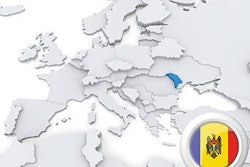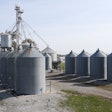In 2014, the global feed industry grew by 2.4 percent,* a statistic attributed to the world’s demand for animal-based proteins. Moving forward, successful and profitable feed production will rely heavily on innovations in feed manufacturing, additive technology and ingredient research.
To this end, the 2015 edition of the Feed Ingredient and Additives (FIAAP) International Conference aims to serve the needs of industry stakeholders by providing a forum to display and discuss leading-edge research in these vital areas of animal food production. The one-day conference, held in Cologne, Germany, on June 9, will be co-located with VICTAM International, this year’s premier feed-focused European trade show.
The 2015 FIAAP Conference’s general session, “Managing the critical issues of the European and international feed industries,” will be presented by Peter Radewahn, managing director of the German Feed Association Deutscher Verband Tiernahrung (DVT) and chairman of the European Feed Manufacturers’ Federation’s (FEFAC) animal nutrition committee.
Speaking as the acting chairman of FEFAC’s animal nutrition committee, Radewahn’s presentation will focus on three major issues in the global feed industry: antibiotic replacement strategies; EFSA and the European Commissions’ high requirements on supplements and feed additives; and the importance of ensuring byproduct quality from global suppliers.
The seven technical sessions following Radewahn’s overview were selected by a panel of judges from dozens of abstract submissions. Here is an overview of the event’s program.
Practical additive and formulation applications
As margins tighten, the feed production side of animal agriculture is increasingly expected to produce high-quality, high-performance product. Mycotoxins, ingredient variability, animal health — many factors influence the work necessary to fulfill such expectations. Three of the abstracts selected by FIAAP’s panel of judges address some of these critical issues.
With more than 30 years of experience under his belt, consultant Didier Grastilleur will examine the different methods to improve the predictive possibilities of manganese bioavailability during his talk, “Finding a reliable explanation for bioavailability variations in different manganese sources from disparate manganese oxide sources.” According to Grastilleur, data from available literature shows extremely divergent relative values for manganese bioavailability from manganese oxide as compared to sulphate – and these huge differences can have a large economic impact on feed formulations. With this in mind, his point is to drive home the importance of understanding the reasons for this occurrence and how it is possible to predict these variations.
Olmix’s Julia Laurain will discuss the immunosuppressive effects of mycotoxins in her presentation, “The interaction of mycotoxins and endotoxins on inflammatory response.” Deoxynivalenol (DON), a trichothecene mycotoxin commonly found in cereal-based foods, causes impaired growth in many animal species and endotoxins impact the production of insulin-like growth factors and alleviate the many actions of growth hormones. The research explores the negative influence mycotoxins and endotoxins have on an animal’s inflammatory response.
Switching gears to formulation, nutrition consultant Rick Kleyn highlights a new methodology that allows the commercial nutritionist to overcome the limitations of linearity implied by feed formulation software. During his presentation, “Diet formulation: making use of non-linear functions,” Kleyn will provide real-life examples and offer solutions for making use of non-linear functions – a method that improves the accuracy of formulations and, in many cases, leads to cost reductions.
Alternative ingredients offer cost-effective solutions
Given the volatility and varying availability of feedstuffs, nutritionists are often on the lookout for alternatives to both macro and micro feed ingredients. The ingredient track of the FIAAP conference offers research on two underutilized alternatives.
Professor Gautam Samanta, from the Kolkata, India-based Department of Animal Nutrition within the W.B. University of Animal & Fishery Sciences, reviews the potential effects of rice-based Distillers Dried Grain and Solubles (DDGS) on duck laying performance and egg quality during his discussion, “Performance improvements of layer ducks fed increasing levels of rice-based DDGS.” In this study, researchers observed that egg production was significantly improved with increased levels of rice-based DDGS in the ration; higher values of Hough unit, Yolk index and Albumin index were also achieved during this trail.
In the presentation, “Gauging the potential of rice bran lyso-phospholipids as a nutrient supplement in dairy cows,” Dr. Umesh Balaji Sontakke will study the effect of feeding rice bran lyso-phospholipids on the performance of lactating dairy cows. His research suggests rice bran lyso-phospholipids fed at 6 percent can replace the costlier sources of energy in the diet of lactating animals without any adverse effect on digestibility of nutrients and milk production. Sontakke works in the dairy cattle nutrition division of the National Dairy Research Institute in Karnal, India.
Energy savings, regulations influence feed production
Cost-effective production and safe feed are high priorities on the agenda of every mill manager; however, changing regulations and high energy costs can hinder profitability. During the FIAAP Conference’s processing track, two research-based presentations aim to aid in offering solutions in these vital areas.
Oriane Guerin, a researcher with consultancy company Zetadec b.v., will provide “Strategies for reduced energy consumption in feed mills” during her presentation — delving into the nuances of Specific Mechanical Energy (SME) and Specific Thermal Energy (STE) in feed production. Her research reveals opportunities to reduce energy consumption through optimization of the capacity, the meal temperature and an appropriate use of the machinery. According to data analyses, energy use can be reduced by up to 20 percent.
“Process control verification for the feed industry” is an increasingly hot topic. Dr. Jennifer Rice, Neogen Corporation’s vice president and senior research director, will explore the importance of verification and validation preventive controls. The intent of her update is to demonstrate how the selection of the correct process control verification tools for a feed mill’s quality control program can impact quality, safety and protect a brand’s integrity.
About FIAAP
FIAAP exhibitions and conferences cover the ingredients and additives used within the formulation of animal feeds and are attended by senior executives from all over the world. The conference is geared toward the interests of nutritionists, veterinarians, feed formulators, CEOs, feed mills directors, integrators, co-operatives, hatcheries, etc.
The 6th annual FIAAP International Conference will take place June 9, 2015, in Cologne, Germany, and will be co-located with VICTAM International together with the 8th Aquafeed Horizons Conference on June 9, 2015, and Petfood Forum Europe on June 10, 2015. The 2015 VICTAM International event combines the FIAAP, VICTAM and GRAPAS exhibitions (and their respective conferences) under one roof at Koelnmesse in Cologne, Germany, June 9-11, 2015.
For more information or to register for the FIAAP International Conference, visit www.fiaap-conferences.com.
*Alltech 2015 Global Feed Survey
















